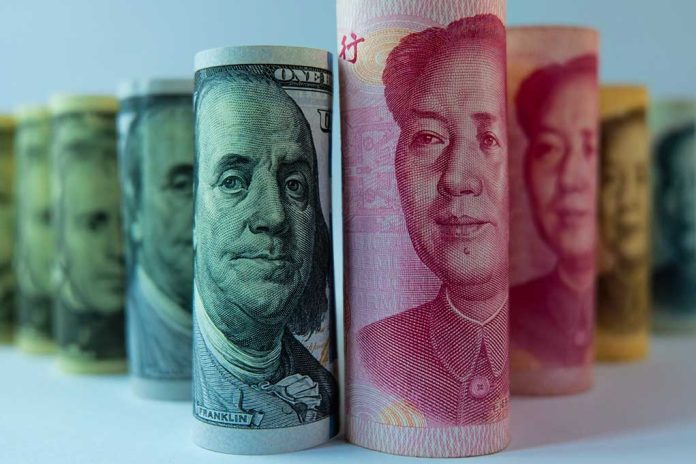
April 4, 2025, marked a significant day for the stock market, as the S&P 500 experienced a dramatic loss of $2.5 trillion amid escalating trade tensions.
Key Takeaways
- U.S. stocks marked potential losses for six of the past seven weeks.
- The S&P 500 Index fell by 2.4% after opening with declines.
- U.S. stock futures showed significant downturns, reflecting global market volatility.
- President Trump’s tariffs on China sparked market instability.
- Trade tensions could potentially push the U.S. into a recession.
Market Chaos Driven by Policy Decisions
On April 4, 2025, the S&P 500 faced a steep downturn, annihilating $2.5 trillion in market value. This event followed President Donald Trump’s announcement imposing sweeping tariffs targeting China. Concerns climbed over the trade tensions’ capacity to incite a recession, despite recent strong labor data. These external pressures heavily impacted the S&P 500 Index, which dropped by 2.4% as of 9:31 a.m. in New York, after showing a premarket drop of as much as 4.1%.
The fallout extended to the Nasdaq 100 Index, which dropped by 2.6%, inching closer to a 20% decline from its February high. Major tech companies like Nvidia Corp., Tesla Inc., and Apple Inc. weren’t spared in investor exodus. Similarly, U.S.-listed Chinese companies, including Alibaba and Baidu, faced significant stock price collapses. Market analysts predict that this rapid value decline parallels the market meltdowns during 2020’s pandemic and the notorious 2000 dot-com crash.
Federal Reactions and Global Repercussions
Traders are closely monitoring Federal Reserve Chair Jerome Powell‘s upcoming statements alongside the monthly jobs report. Amid the chaos, U.S. stock futures fell significantly, S&P 500 and Nasdaq 100 Index futures both dropping as much as 4.1% and 4.6%. This downturn aligns with China’s announcement of a 34% tariff on American imports, effective April 10, 2025, as a countermeasure to new U.S. tariffs. Investors reacted by seeking security in Treasuries, with heightened market volatility reflected in the Cboe Volatility Index surpassing 45.
The financial community, apprehensive about a recession, took advantage of safety nets like Treasuries. As the S&P 500 stood 12% beneath its February record, funds withdrew substantially, $4.7 billion siphoned from U.S. stocks in a brief span ending April 2. These high-risk market behaviors and adjustments have made way for increased credit risk measures, redeploying strategies reminiscent of the previous regional banking crisis.
Economic Outlook Amid Trade Tensions
Aside from the immediate market impact, Wall Street observers are modifying their economic forecasts. Analysts from Oppenheimer and RBC Capital Markets are reassessing their S&P 500 price targets, anticipating an even dimmer outlook. President Trump’s recent announcement of a 10% tariff on all exports to the U.S., implicating around 60 nations, heightened tension in global trading systems. The evolving trade war threats and their potential economic fallout suggest a prolonged period of market unpredictability and investor caution.
The derivatives market’s prediction of more volatility poses further concerns. Options traders brace for significant movements within the S&P 500. Observers hope for a resolution that could stabilize economic projections and reintroduce investor confidence amidst a turbulent fiscal landscape.





